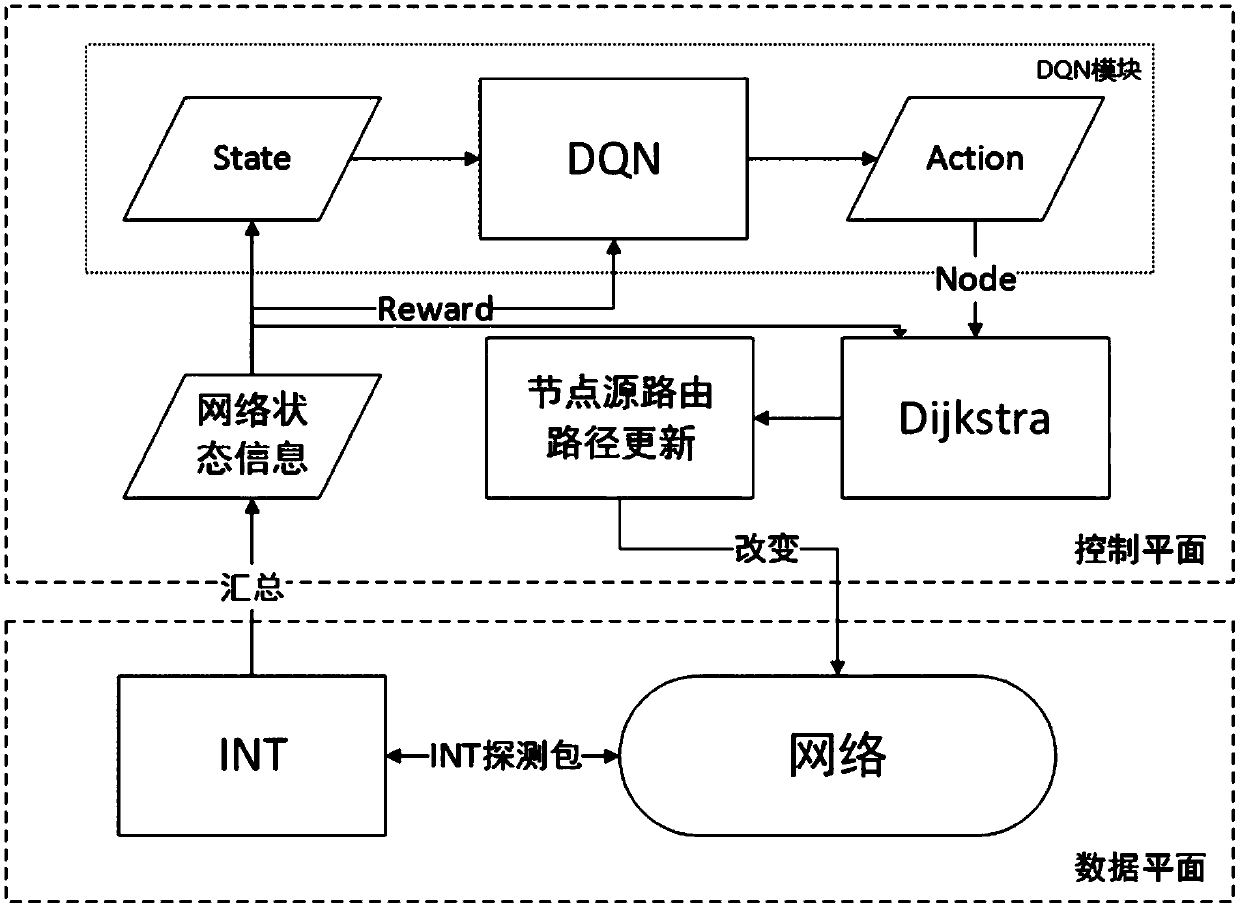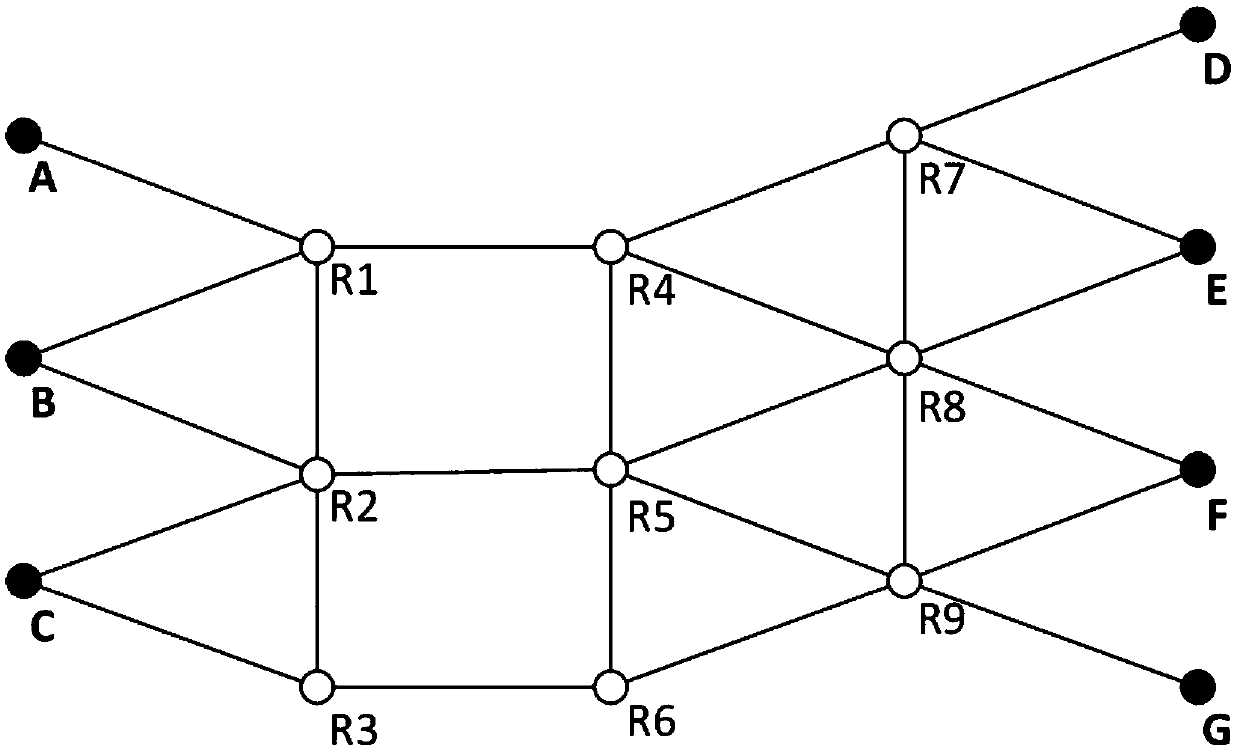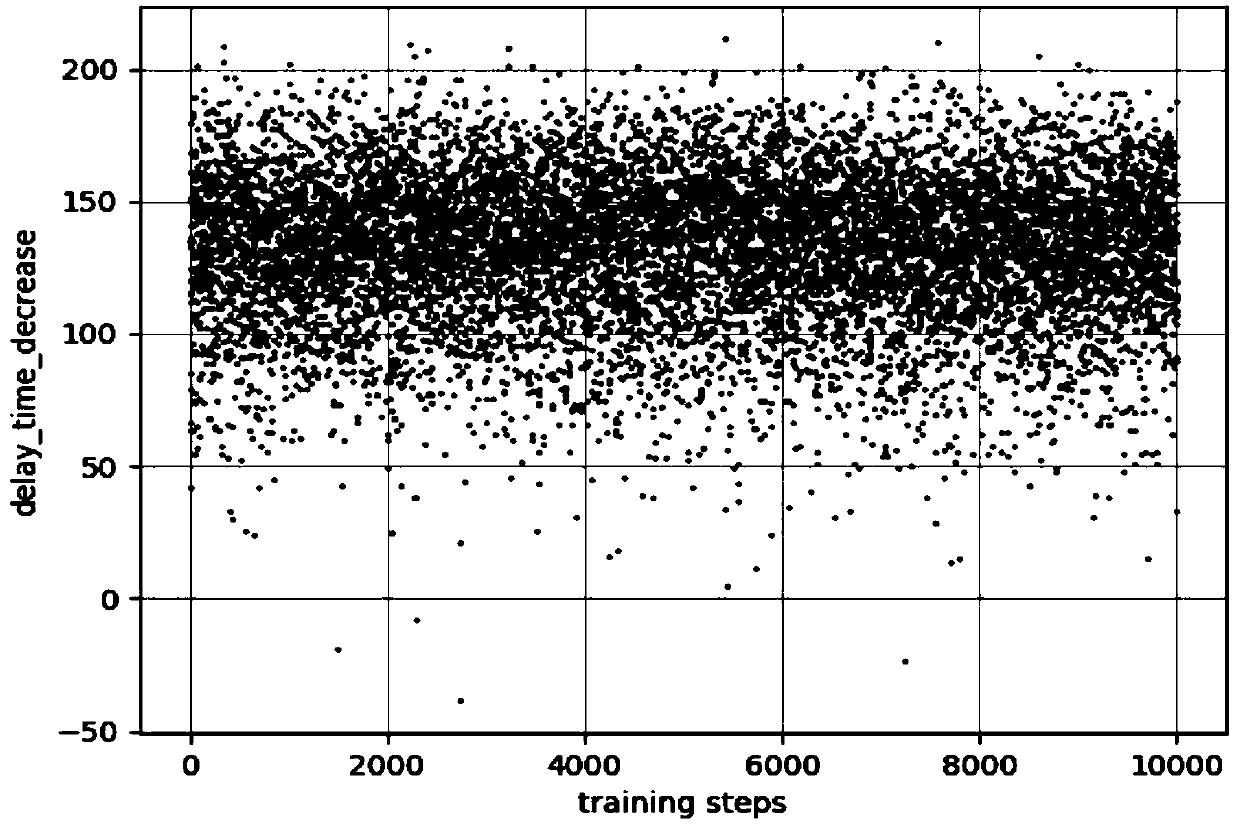A network load balancing system and a balancing method based on deep reinforcement learning
A technology of reinforcement learning and network load, which is applied in the field of computer networks, can solve problems such as limited load balancing effect, uneven network congestion, and inability of ECMP to effectively solve traffic distribution, so as to achieve load balancing and simple structure
- Summary
- Abstract
- Description
- Claims
- Application Information
AI Technical Summary
Problems solved by technology
Method used
Image
Examples
Embodiment 1
[0106] In an embodiment of this solution, we established a simple network model with an asymmetric topology to test whether the DQN model can learn a traffic scheduling policy that is beneficial to network load balancing. The network topology of the model is as follows figure 2 shown.
[0107] Among them, seven nodes A, B, C, D, E, F, and G are set as edge nodes, which are marked as black in the figure as the source node for sending traffic and the destination node for receiving traffic in the network.
[0108] As relay nodes in the network, R1, R2, R3, R4, R5, R6, R7, R8 and R9 do not generate traffic themselves, but can receive and forward traffic from other nodes, which are marked in white in the figure.
[0109] We stipulate that the initial state described above is used as a starting point, and 25 steps are executed as a round, and a total of 10,000 rounds are run.
[0110] As a comparison of this scheme, we simulated the random strategy scheme in the same environment....
PUM
 Login to View More
Login to View More Abstract
Description
Claims
Application Information
 Login to View More
Login to View More - R&D
- Intellectual Property
- Life Sciences
- Materials
- Tech Scout
- Unparalleled Data Quality
- Higher Quality Content
- 60% Fewer Hallucinations
Browse by: Latest US Patents, China's latest patents, Technical Efficacy Thesaurus, Application Domain, Technology Topic, Popular Technical Reports.
© 2025 PatSnap. All rights reserved.Legal|Privacy policy|Modern Slavery Act Transparency Statement|Sitemap|About US| Contact US: help@patsnap.com



